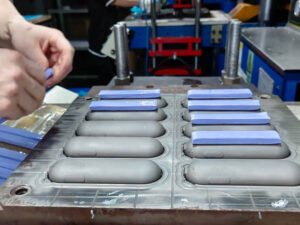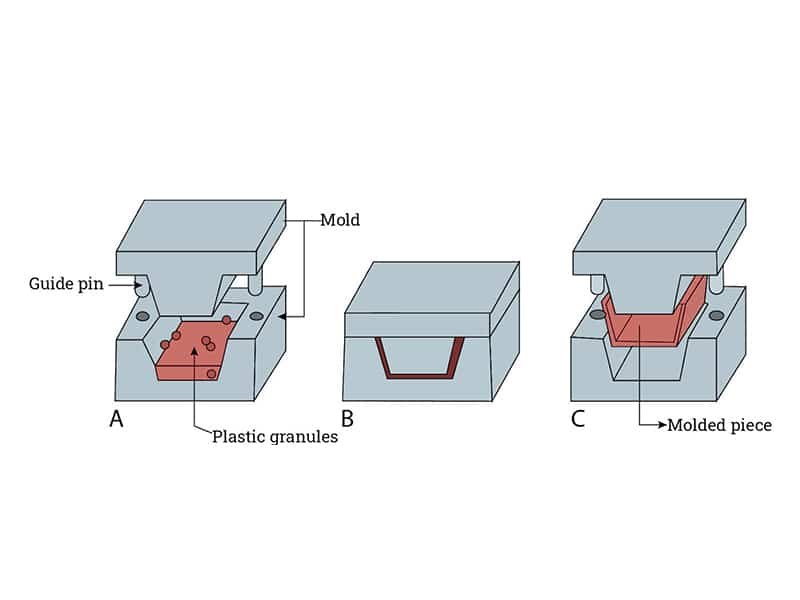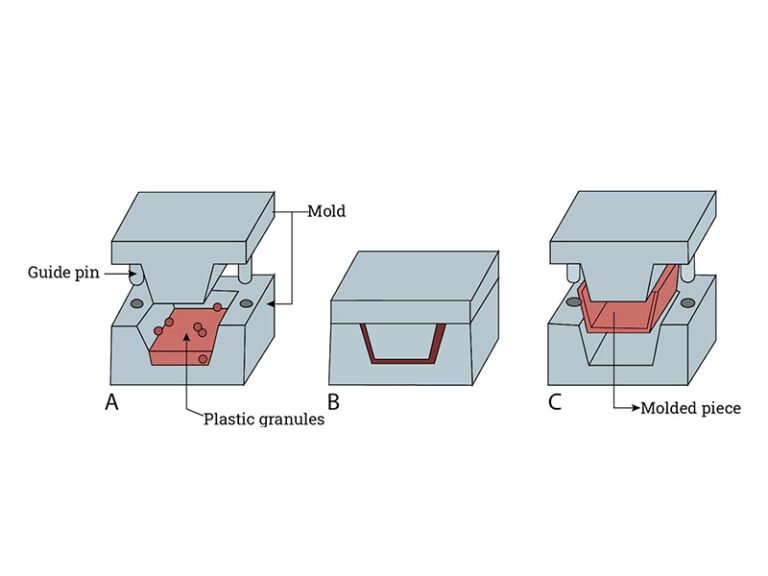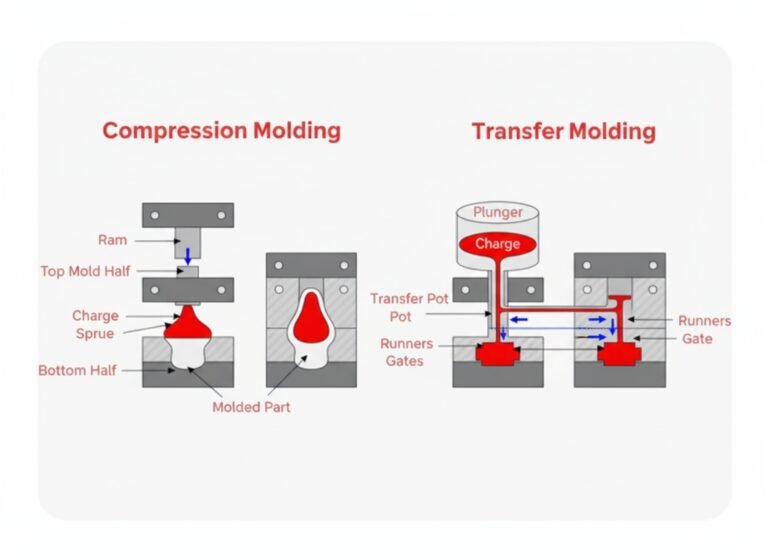Continuous compression molding is becoming an important manufacturing method for producing composite parts with consistent quality, stable mechanical performance, and high production efficiency. Compared with traditional batch compression molding, continuous compression molding integrates heating, pressing, and cooling into a standardized, uninterrupted process.
As a compression molding manufacturer, we can leverage this process to produce long composite profiles, thin structural components, and high-volume parts with reliable repeatability.

What is Continuous Compression Molding?
Continuous compression molding involves feeding molten polymer material, often reinforced with fibers, through an extrusion system. The extruder produces a continuous stream that is cut into precise doses. These doses are placed into molds that open and close rapidly on a rotating or linear carousel. Pressure is applied to shape the material, followed by cooling and ejection.
In composite materials, CCM excels with fiber-reinforced thermoplastics such as glass or carbon fiber in matrices like polypropylene (PP), polyamide (PA), or polyetheretherketone (PEEK). The process preserves fiber length and orientation better than some alternatives, resulting in parts with improved mechanical properties. For thermoset composites, it adapts sheet molding compounds (SMC) or bulk molding compounds (BMC) into continuous operations.
Advantages of Using Continuous Compression Molding
Continuous compression molding offers several practical benefits compared to traditional batch compression or injection molding.
High Production Efficiency
The uninterrupted material flow reduces idle time, lowering cycle time per part. Cycle times range from 3 to 20 seconds per part, enabling high output rates of up to 4000 pieces per hour in multi-cavity systems.
Improved Cost Control and Less Waste
Because the process operates continuously, labor requirements are reduced, and machine utilization is higher. Waste levels remain below 1% due to the absence of runners or gates common in injection processes.
Enhanced Fiber Alignment and Strength
Composite sheets used in continuous compression molding often maintain optimized fiber orientation. This alignment contributes to improved structural performance and predictable mechanical behavior across the entire length of the molded section.
Stable Quality and Dimensional Accuracy
The heating and compression stages occur under controlled conditions, resulting in thickness uniformity and fewer defects. Part-to-part variation is reduced, supporting demanding applications such as transportation and engineered structures.
Suitability for Lightweight Components
The process works well with both glass-fiber and carbon-fiber reinforced materials, enabling the production of lightweight profiles and panels that meet strict strength-to-weight requirements.
Materials Used in Continuous Compression Molding
Continuous compression molding materials primarily thermoplastic and thermoset systems.
Thermoplastics material dominate modern CCM lines, using matrices such as PP with long glass fibers (LGF), PA66 with carbon fiber, or high-performance options like PPA and PEEK. These materials melt and solidify reversibly, allowing full recyclability and reprocessing of scrap.
Thermoset CCM, often based on unsaturated polyester or epoxy with glass fibers in SMC format, involves chemical cross-linking during molding. This provides good heat resistance but prevents recycling of cured material. Thermoset versions typically operate at lower temperatures compared to thermoplastics. More about thermosetting plastics for compression molding.
The table below summarizes the differences.
| Item | Thermoset CCM | Thermoplastic CCM |
|---|---|---|
| Recyclability | Limited (non-reversible cure) | Full (remeltable) |
| Molding Temperature | 140-180°C | 200-400°C |
| Impact Resistance | Moderate | High |
| Typical Fiber Retention | Good | Excellent |
| Common Applications | Exterior panels, electrical housings | Structural components, optical parts |
Applications of Continuous Compression Molding
Continuous compression molding is used across multiple sectors thanks to its efficiency and product consistency.
- Aerospace: C-shaped, U-shaped, and T-shaped interior structures
- Automotive: Battery enclosures, roof beams, and A-pillar reinforcements.
- Packaging: Bottle closures, coffee capsules, and pharmaceutical bottles.
- Construction and Infrastructure: Composite beams, wall panels, cable management channels, and weather-resistant exterior profiles.
- Industrial and Electrical Components: Panels, housings, trays, and non-conductive components.
Optical and Lighting Applications: Lenses.
Conclusion
Continuous compression molding offers a reliable path for producing lightweight, uniform, and high-volume composite parts. By selecting suitable materials, confirming the process window, and aligning product geometry with the strengths of continuous compression molding, we can move from concept to production.




